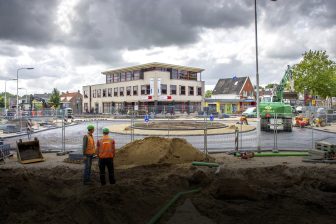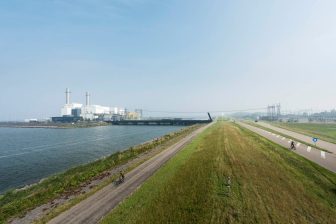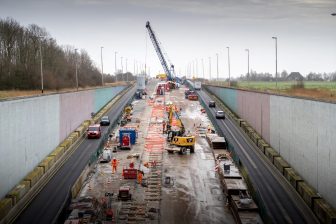First section East European High Speed Line complete
EUROPE’S LARGEST HIGH-SPEED RAILWAY INFRASTRUCTURE TO BE INAUGURATED ON THURSDAY MARCH 15TH 2007
Paris, France – The first section of the East European High Speed Line, covering a distance of 300 kilometres and linking Paris to the main cities in eastern France, will be inaugurated by Réseau Ferré de France and its partners (the French State, which is the main financing body, along with the grand duchy of Luxembourg, the European Union and 17 local authorities) on March 15th, less than three months
before it officially opens to traffic on June 10th 2007.
Looking back at a few key facts and figures
It was in the summer of 2002 that the major civil engineering work first got underway in the regions through which the HSL will pass: Greater Paris, Champagne-Ardennes and the Lorraine. 60 million tons of material were cleared, 12 million tons of noble materials were brought in and over three hundred major structures – more than one per
kilometre – were constructed by the 10,000 men and women working on the project.
October 2004 marked the start of track-laying works, with contractors laying 1,300 kilometres of track and installing 12,000 catenary posts after having transported them to the site by road.
Experimental zones were created in which innovative structures or materials were used to enable the RFF to study the infrastructure’s long-term performance and explore new technological developments for use when building
future lines.
Environmental considerations were addressed right from the start, and several dozen outstanding sites are now
being monitored several times a year by both the RFF and the scientists who will help draw up the environmental
impact report.
A committee comprised of all those who have jointly-financed the project has monitored the progress of work every
step of the way. The East European HSL is, indeed, the first infrastructure of its type to benefit from extensive
public co-financing from the French State, Europe, the grand duchy of Luxembourg and the 17 local authorities(*) through which the line passes. It is also the first HSL to be built under the direct project management of Réseau
Ferré de France, which has owned France’s national rail network since 1997 and manages France’s major rail
projects.
A record-breaking line
The East European HSL will be the first high-speed line in France to use the new European signalling system, ERTMS, and the new telecommunications system, GSM-R. What’s more, when the line opens to traffic in June 2007, operated by the SNCF, it will become the fastest line of its time, with trains running at speeds of 320km/h. A
series of very-high-speed tests are currently being carried out on the line by the RFF, ALSTOM and the SNCF, notably to test its sturdiness and reliability in the joint aim of pushing France’s rail transport excellence to its limits.
On January 24th 2007, France’s Transport Minister, the local authorities and the RFF signed a financing agreement to begin preparations for the second phase of the HSL, scheduled to run from Baudrecourt to Vendenheim, with a view to beginning work by the year 2010. The European Union will also be involved in the second phase of this major European project. As of June 10th 2007, once the 300 kilometres of new line have
opened to traffic, Paris will be just 2 hours and 20 minutes from Strasbourg, 1½ hours from Metz and Nancy, and 45 minutes from Reims.
(*)The Greater Paris Regional Council, the Champagne-Ardennes Regional Council, the Lorraine Regional Council, the Alsace
Regional Council, the Ardennes County Council, the Marne County Council, the Meuse County Council, the Meurthe-and-
Moselle County Council, the Moselle County Council, the Vosges County Council, the Lower Rhine County Council and the
Upper Rhine County Council, the Reims Metropolitan Authority, the City of Reims, the Urban Community of Strasbourg, the
City of Colmar and the City of Mulhouse.
U las zojuist één van de gratis premium artikelen
Onbeperkt lezen? Profiteer nu van de introductieaanbieding voor € 10,- per maand.
Bent u al abonnee?



